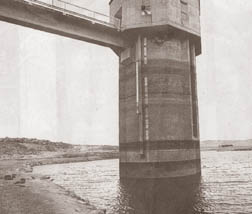|
observer |
|
|
|
|
|
OTHER LINKS |

|

|

|
|
|
|
|
Scientists have detected a slowing down of 3.5 per cent in the system of looping air currents over the Pacific in the past 140 years. Known as the Walker Circulation, its effects are felt worldwide - as disruptive El Nino episodes, seasonal Asian monsoons and the upwelling of nutrients from the bottom of the ocean for marine life.
The system functions as a huge belt stretching across the tropical Pacific, with dry air moving eastward at high altitude from Asia to South America and moist air flowing west-ward along the ocean's surface, pushing the prevailing trade winds.
When the moist air gets to Asia, it triggers massive rains in Indonesia. Then, it dries out, rises and starts the cycle again, heading east.
"The Walker Circulation is fundamental to climate throughout the globe and variations in its intensity and structure affect climate across the planet", said Gabriel Vecchi of the US National Oceanic and Atmospheric Administration and an author of the study. "The scale of this feature is enormous".
But greenhouse gases emitted from the burning of fossil fuels have slowed down the Walker Circulation. The weakening has been more pronounced in the past 50 years, in line with what theorists predict should happen as a result of human-induced global warming.
Global temperature records show that the planet is about one degree warmer than it was a century ago. It is not known how much, if any, of the increase is due to greenhouse gases, but most of the rise in temperatures has occurred in the past 30 years.
The slowdown of air curreants could lead to more intense droughts, which means widespread crop failures in South-east and South Asia. Wildfires in Indonesia and Australia might also become more common. Nutrients that rise from the bottom of the ocean - essential for marine life - will decrease.
The weakening of the Walker Circulation is expected to continue, and could do so by another 10 per cent by 2100. This means ocean flow could fall by almost 20 per cent.










